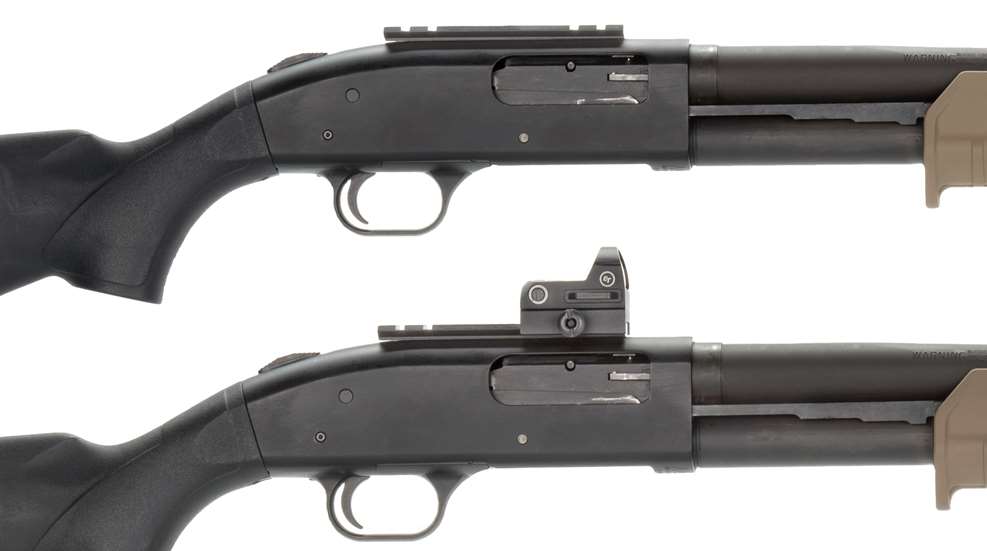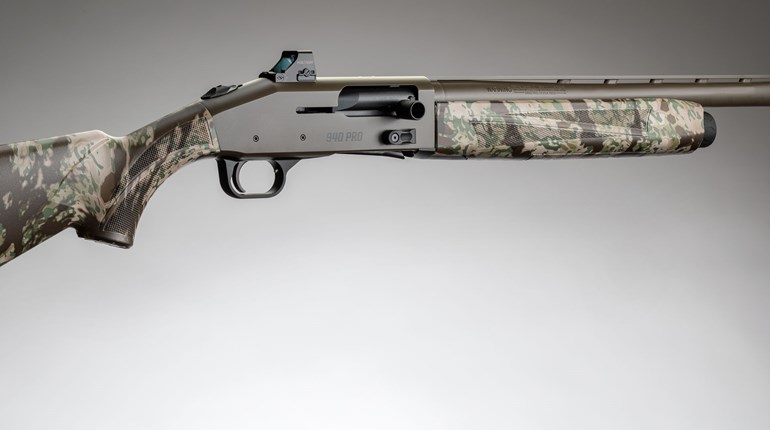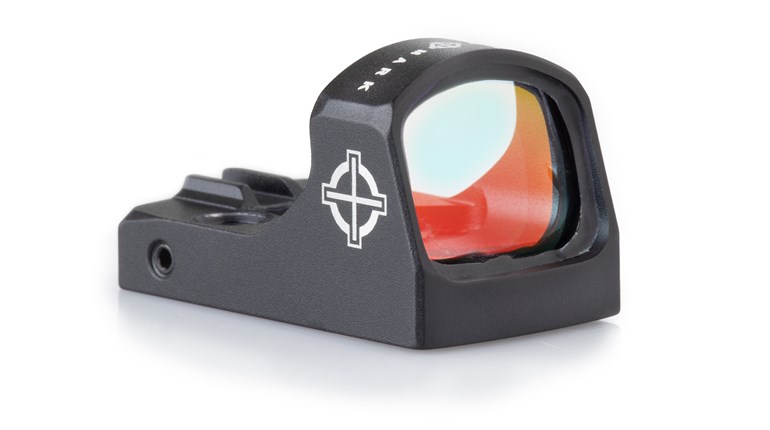
One flip through this magazine reveals that red-dot sights on handguns are incredibly popular right now. For ARs it’s been like that for some time, mainly because few can deny this sighting system’s speed and heads-up accuracy. So, wouldn’t one be the cat’s meow on your home-defense shotgun? It’s not as cut-and-dried as you might think. This column will examine the pros and cons of a red-dot sight on your bedside shotty.
Accuracy
We all know that shotguns are popular for their devastating patterns that mitigate missing. But, we also know that without much practice, they are, in fact, easy with which to miss. At home-defense ranges a shotgun’s pattern is only several inches wide. While this is a better margin for error than allowed by a handgun or rifle, it isn’t the hallway-clearing swath of destruction as depicted in the movies. Indeed, at ultra-close ranges, a shotgun pattern looks more like a large bullet than a swarm of bees, so this is one reason for choosing a red-dot sight that gives a glowing point-of-aim. When shooting a slug load that is essentially a big bullet, at longer ranges there is little debate: A red dot is superior to a common bead front sight in terms of accuracy.
Finally, a red-dot optic mandates that the shooter’s dominant eye vision is aligned down the barrel and not over it—a common mistake made by adrenaline-laced shooters using a subtle front bead—and one that’s often the culprit of misses when under stress.
Winner: Red-dot sight
Speed
This issue is complicated and depends upon the shooter’s style of shotgun shooting and skill level. No doubt, red-dots are popular on handguns due to this sight’s single-focal plane, wherein the shooter simply looks at a target with the red dot superimposed over it. Both are clearly in focus. This system is much quicker than finding and focusing on the front sight, aligning it with the fuzzy rear sight and then placing both on the slightly out-of-focus target. Same goes for rifles, even though aiming a rifle via iron sights is inherently faster than aiming with irons on a handgun because the shooter has the face and shoulder contact points for reference. A red-dot on a rifle is faster yet than irons.
However—and this is where it gets slightly more complicated—properly trained shotgun shooters shooting a properly fitting shotgun focus on the target while subconsciously inserting the muzzle at the correct point in space. The bead merely serves as a subtle reference point. The technique takes much practice to master, but when mastered it’s more accurate on rapidly moving targets than any optical sighting system, and it’s also faster.
On small, stationary targets when the shotgun should be aimed more like a rifle, the use of a simple bead sight and the head/cheek as a rear sight reference point is adequately accurate and fast. But, if the shotgun shooter is not a master—or if they choose to treat shotgun shooting like rifle shooting wherein deliberate aim is taken—the red-dot sight is likely quicker for the reasons mentioned above.
Winner: Shooter-dependent
Durability
This one isn’t close. A brass bead sight screwed or welded on the end of a shotgun’s muzzle is near-bulletproof, whereas a red-dot optic can break if it takes a hard knock. Not to say that red-dots aren’t durable, just that they are inherently more prone to breakage than a simple brass bead.
Winner: Brass bead
Reliability
Much more common than actually breaking, a red-dot sight’s Achilles’ heel is its battery life. Batteries can and will fail, and they seem to do so when you need the sight most. Certainly, some red-dot sight models are better than others, but there is nothing to debate here when compared with a brass bead.
Winner: Brass bead
A Red-Dot Sight’s Other Problems
In addition to the decreased reliability compared to a brass bead, the red-dot also has other problems that aren’t as frequently mentioned. One is glare produced when direct light from the sun or a flashlight enters the optic’s objective lens. Often such light “blows out” the image, so neither the target nor the dot can be seen. Some of the more expensive red-dot sights have multiple lens coatings to mitigate this effect somewhat, but it can still be a problem. Also, some red-dot optics’ auto-dimming systems remain too bright even in dim light, which can hide a dimly lit target behind it. Furthermore, a thin layer of dust can have a similar effect, much like driving into the sun with a dirty windshield.
Secondly, plenty of red-dot optics must be mounted in a way that mandates the shooter raise their head off the stock so the dot can be viewed. This act decreases speed derived by familiarity of the gun as it is mounted and, mainly, increases felt recoil due to a loose cheek weld. Increased recoil can have negative effects on accuracy and speed of follow-up shots.
So, Which is It?
As tempting and as trendy as it is to install a red-dot optic on your home-defense shotgun, I believe it’s only positive (accuracy) doesn’t outweigh its downsides. Unless you shoot slugs routinely, a simple brass bead front sight or, better yet, a steel express-style sight, is superior thanks to its combination of speed, increased accuracy on moving targets, recoil mitigation and, most of all, reliability in the heat of the moment when you need your shotgun most.






































